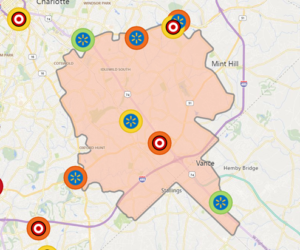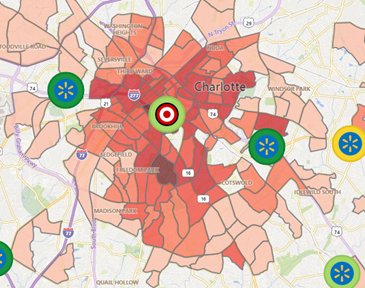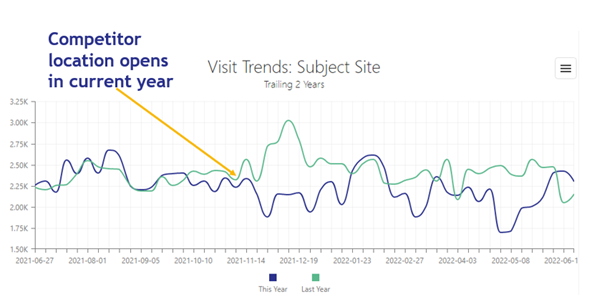What do your competitor's customers really want?
When organizations approach Kalibrate to help with their location strategy, it’s usually because they have a couple of really big questions they’re trying to answer.
In almost every circumstance, the reason they’re not able to find the right solution is blind spots in their data and analytics. They may have high-quality customer data and sophisticated trade area definition methodologies but lack visibility on how competitive pressures impact store performance. Others have spent vast amounts of money on third-party data but lack the analytical tools to leverage that data to effectively generate insight.
While objectives may differ – it could be new openings or acquisitions, growing market share by winning customers the competition, or optimizing a real estate portfolio – an insight-led approach will always win.
Let’s consider winning market share from the competition as a scenario. Firstly, you’re going to need to understand who the main competitors are in your location’s trade area. Once you understand the trade areas of your sites and the competition, you can start quantifying how the presence (or absence) of particular competitors impacts performance.

Foot traffic data – sometimes ‘mobility data’ – can provide answers here. By understanding which chains you’re sharing the most customers with, you can start to utilize insight to strategize around how to win share.

If you’re finding a sizable portion of your best customers have a choice of competitors between your store and their home or work location, chances are you’re in the wrong place. Conversely, you might find you’re ideally located based on your trade area analysis, but a particular competitor is successfully pulling more of your customers than you’d expect. In this instance, you’re looking at marketing, pricing, or merchandising response.
Mobility data can also help quantify the impact of reconfigurations, new competitor openings, or the impact of new pricing tactics or marketing campaigns – but only if you have the reporting capabilities to make turn data into insight.

For many retail concepts, there are likely to be indirect competitors that can impact performance too – and that might not be a negative impact. Identifying co-tenants that act as a pull to your location can support effective location decisions when assessing new deployments or portfolio decisions.
The value
If you’re not investing in insight to better understand how competitive impacts affect store performance, chances are you’re placing your brand at a significant disadvantage. Your site selection process isn’t as robust as it could be – either in missing locations with the best potential or unnecessary wastage of sites that will never perform. You’re almost certainly not making the most of your marketing budget. And, as a consequence of the above, you’ll likely be seeing your P/L taking a hit.
Today, there’s vast amounts of data on the market to support effective decision making – mobility or ‘foot traffic data’ is just one piece of the puzzle. But when you combine quality datasets with analytics and modeling, and tools that empower smarter working, that’s where retailers truly begin to realize just how powerful competitive insight can be. If you’re not leveraging these capabilities, you’re conceding a blind spot in your real estate and marketing strategies – and in this highly competitive retail environment, there’s a good chance your competition will be ready to capitalize.
Want to know more about your competitive environment? Watch the product launch
Read more articles about:
Location intelligenceSubscribe and get the latest updates
You may unsubscribe from our mailing list at any time. To understand how and why we process your data, please see our Privacy & Cookies Policy
Related resources
Location intelligence
Forman Mills accelerates growth with the Kalibrate Location Intelligence platform
The value apparel and home goods retailer selects Kalibrate to to support its national expansion strategy.

Location intelligence
The Kalibrate news round-up: November 2025
In this monthly feature, we look across the industry and mainstream news to uncover stories of note that we think are...

